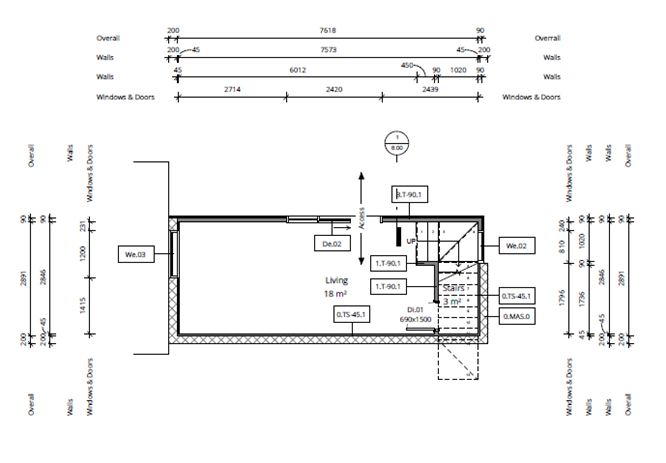Content is not meant to go in the body as it doesn't appear in the menu.
Accordion instructions here
Hello Jamie
I want to know where the architectural plans for the Simmonds Street project are. They were due on the 17th of June and we haven’t yet received them.
We need the detailed plans ASAP as they are essential for the upcoming project phases. Do you have a date in mind when you will be able to get the plans to us?
Thanks a bunch, and looking forward to your response!
Ta
Tip: looking for additional information to improve your Film Study
In the previous activities, you’ve already done the hardest part of your film study. Next, starting with what you already know, you will look for other sources for information to expand on your film study.
Search for information on camera techniques
For example, you know that the film Brave was made by Pixar and directed by Mark Andrews. Let’s say you’d like to find some relevant information about camera techniques that enhance the storytelling in Brave. Why not search to see if the director has given any interviews or explained any of his approaches to film making in other sources such as ‘making of’ documentaries or featurettes, or interviews and media articles?
A quick search for Mark Andrews, Brave Director and you’ll find a variety of sources. One of the first I found was a lecture to Cal Arts students, in which he emphasizes how important it is “to tell the story as economically as possible, letting an image sell itself and give the information that makes sense”.
His words reflect the observations I’d made already when watching the opening sequence from Brave. In just the first few shots, the economy of storytelling is very evident, and viewers quickly learn about the world, characters, and historical and cultural settings. All of that is packed into just the two opening shots.
Search for information on filmography
There are plenty of other directions that you could explore when looking for other sources to inform your film study. If you search Mark Andrews filmography, you’ll see he has worked as a storyboard artist on films like Pixar’s The Incredibles, directed by Brad Bird. There are several excerpts available online in featurettes about making The Incredibles, where you can see Mark Andrews discussing his approach to storyboarding, and some of those same ideas can be seen in his work on Brave as director.
You could even look to Brad Bird as a director to explore how his directorial choices are similar to (and may even have influenced) Mark Andrews's directorial choices in Brave. Don’t be afraid to explore possible connections, by seeking examples (evidence) to support or counter different thoughts and ideas.
Characters and environment
Economy of storytelling is perhaps most obvious in the handling of characters. The main character in Brave, Merida, has physical features that reflect her personality, making it almost instant for an audience to understand or identify with the character. Her “… mass of curly, unbridled, wild hair…. It just had to be red, because she’s passionate and fierce and independent, so that as soon as she walks out on screen, you know exactly what her story is, without the filmmakers needing to go into any exposition to see what her character is like.”
Economical thinking is equally evident in the environments in Brave. “Movie making is a visual storytelling medium, and everything that we do supports the story. The design of the backgrounds, the design of the castle, the characters, what we’re trying to say about the land, it’s all in the design.”
What does a case study look like?
Default blockquote
I came, I saw, I conqueredJulius C
This goes above the snippet.
Try this question!
test
node-8561_activity-1
node-8560_activity-1
H5P node-8561_activity-2
Node-10367_Activity-1
Node-10367_Activity-1A
Node-10367_Activity-2
Node-10367_Activity-3
Node-10368_Activity-1 - don't use
Node-10368_Activity-1A
Node-10369_Activity-1
Node-10369_Activity-2
Node-10369_Activity-3 - don't use
Node-10369_Activity-3A
Node-10369_Activity-4
Node-10370_Activity-1 don't use
Node-10370_Activity-1A
Node-10370_Activity-2
Node-10371_Activity-1
Node-10371_Activity-2
Node-10371_Activity-3
Node-10372_Activity-1
Node-10372_Activity-2
Node-10372_Activity-3
Node-10373_Activity-1
Node-10373_Activity-2
Node-10373_Activity-3
Node-10374_Activity-1
Node-10374_Activity-2
Node-10375_Activity-1
this is the quote. Does it look less scary than the default quote?



